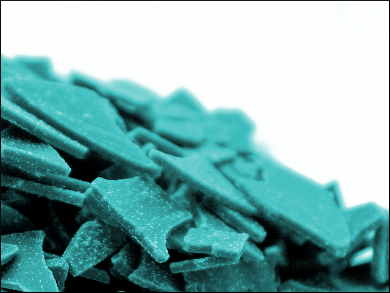Nitrogen monoxide (NO) is a pollutant that can contribute to acid rain and ozone layer depletion. It is produced during combustion in cars and its emissions are reduced by the vehicle’s catalytic converter. There are a number of silicon-based nanomaterials which act as photocatalysts, but none had been used for NO decomposition so far.
Hiroshi Itahara, Toyota Central R&D Labs., Inc., Nagakute, Japan, and colleagues have developed the first Si-based nanomaterial that is active in the photocatalytic decomposition of NO. The team heated a mixture of CaSi2 and NiCl2 at up to 500 °C. The formation of CaCl2 during this process acts as driving force to extract Ca from the layered CaSi2. The resulting product is a nanocomposite powder composed of Si nanoflakes and metallic particles (Ni and Ni3Si). The CaCl2 was removed by washing with dimethylformamide (DMF).
The nanocomposite has a catalytic activity for NO decomposition under irradiation with light (λ > 290 nm) that is higher than for Si or SiO powders and comparable to TiO2, a commonly used photocatalyst. The activity does not degrade over time. According to the researchers, the same strategy could be used for the production of other high-performance Si-based photocatalysts.
- Photocatalytic Activity of Silicon-based Nanoflakes for the Decomposition of Nitrogen Monoxide,
Hiroshi Itaharaa, Xiaoyong Wub, Haruo Imagawaa, Shu Yinb, Kazunobu Kojimab, Shigefusa F. Chichibub, Tsugio Sato,
Dalton Trans. 2017.
DOI: 10.1039/c7dt01682d




